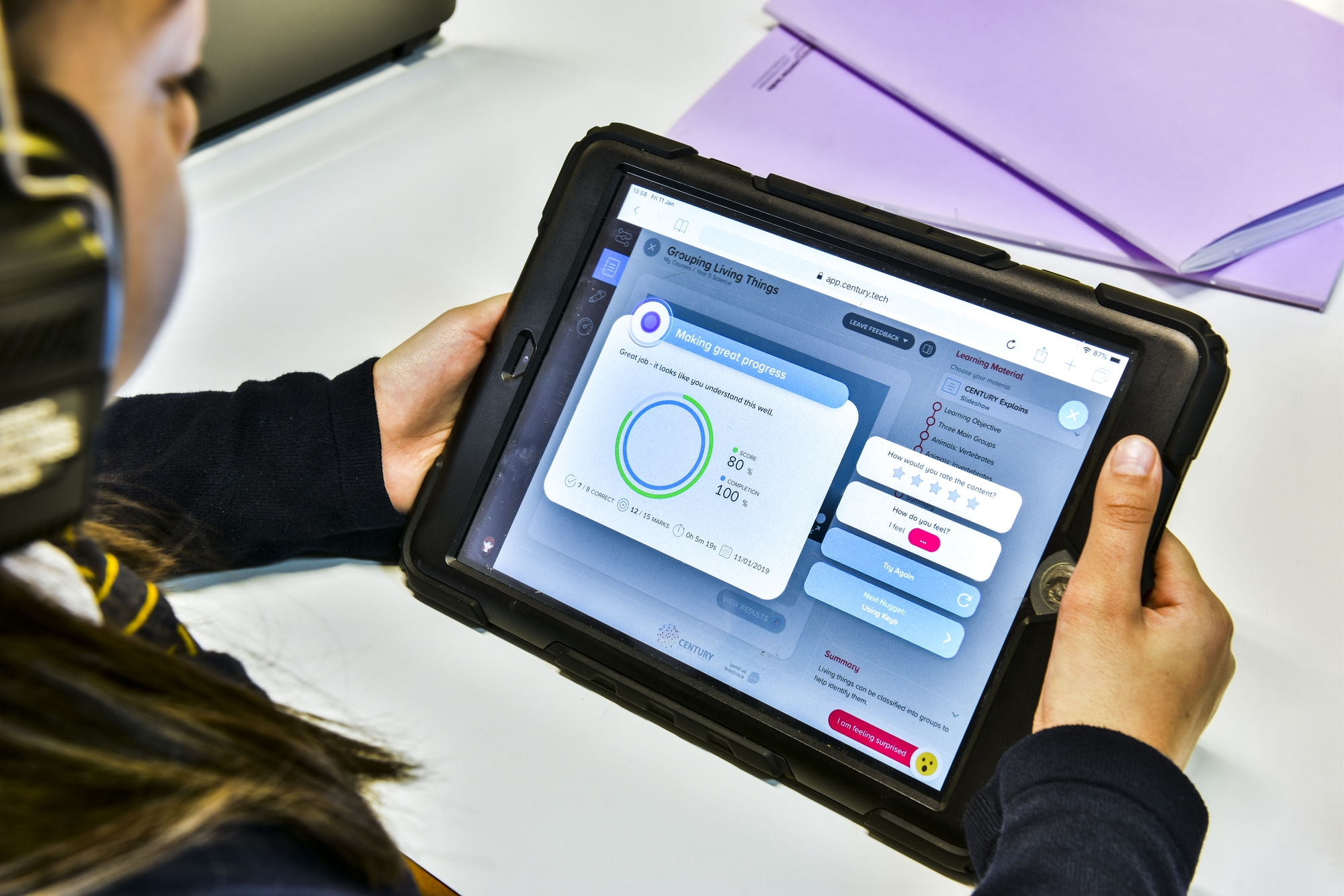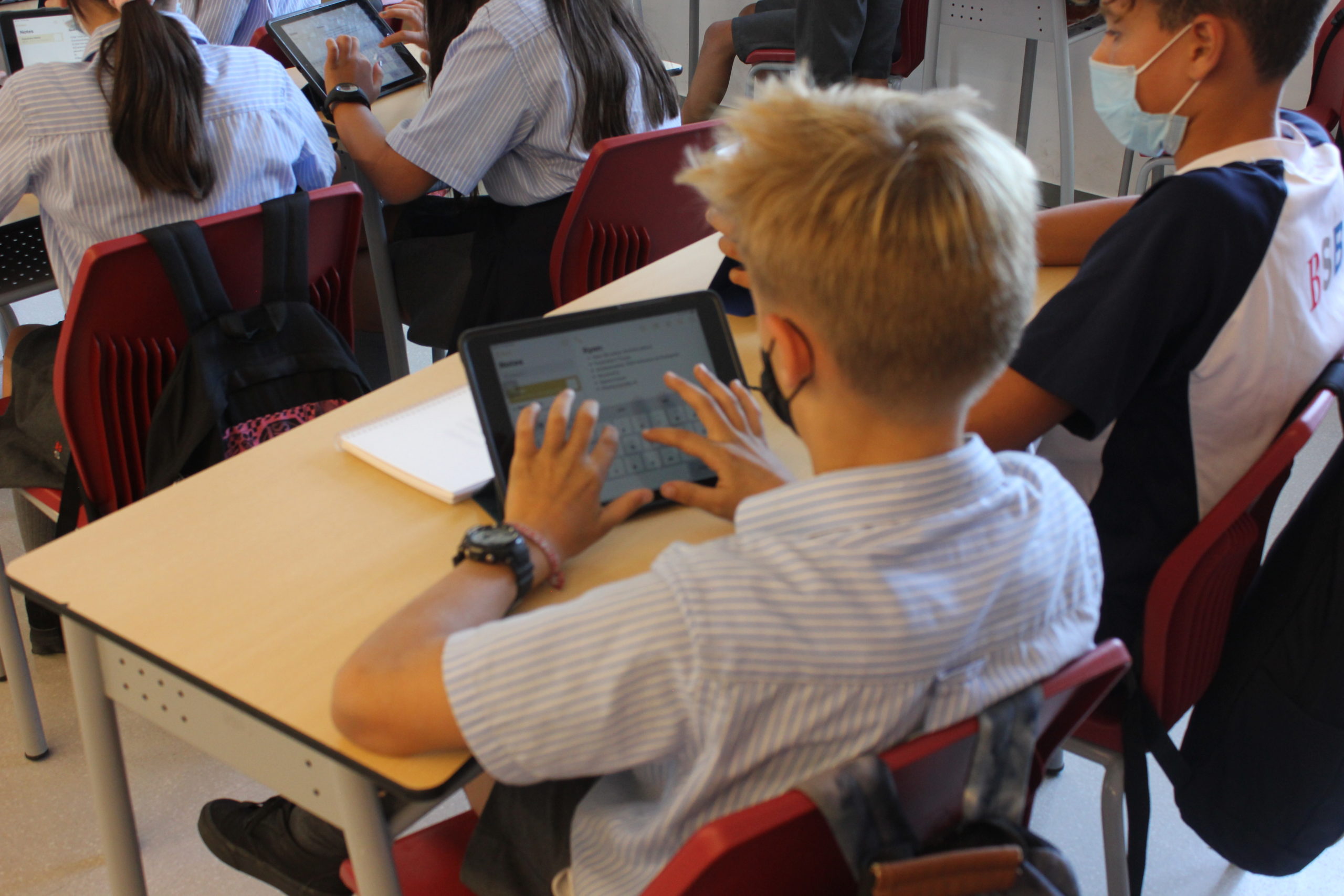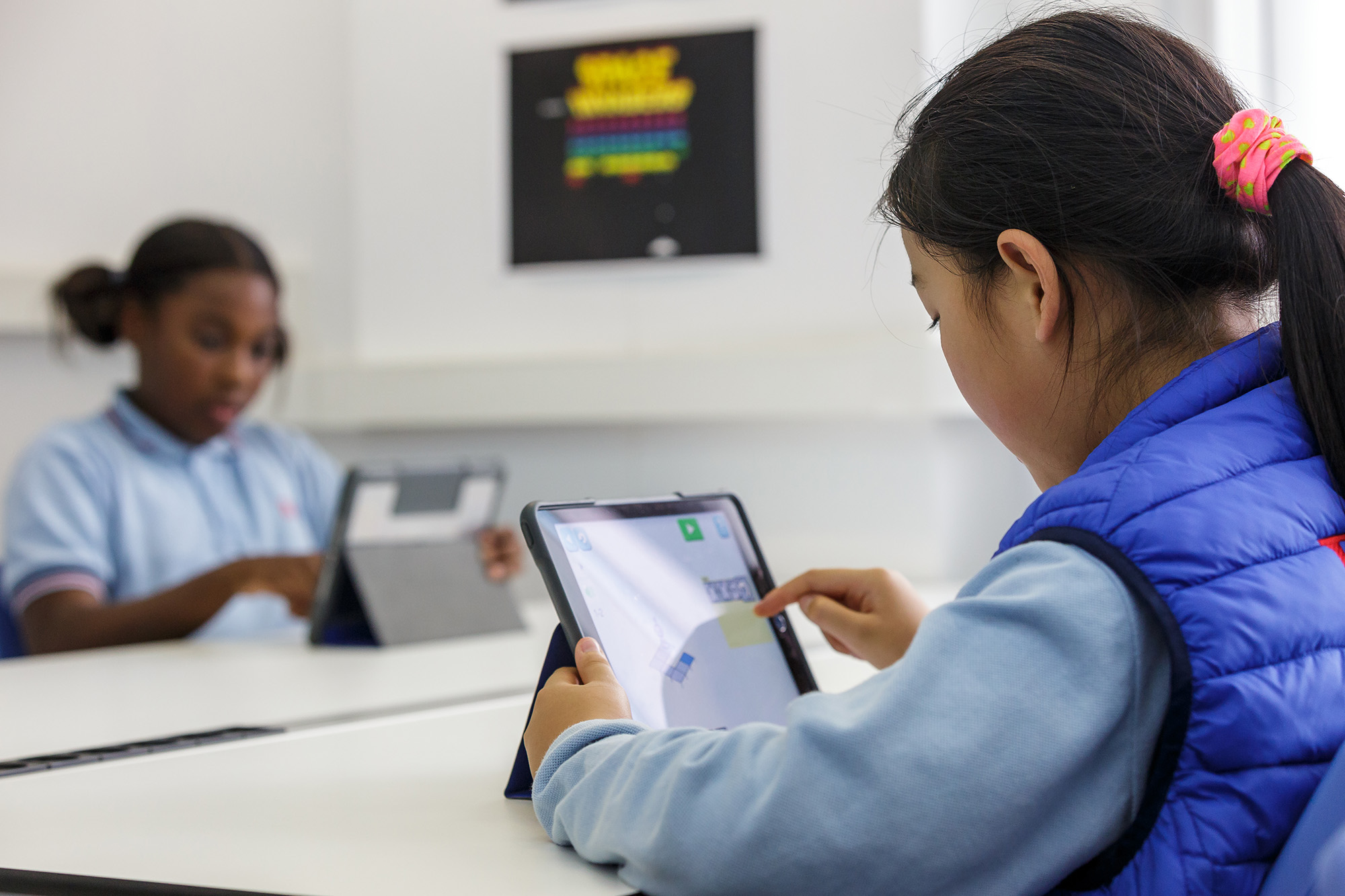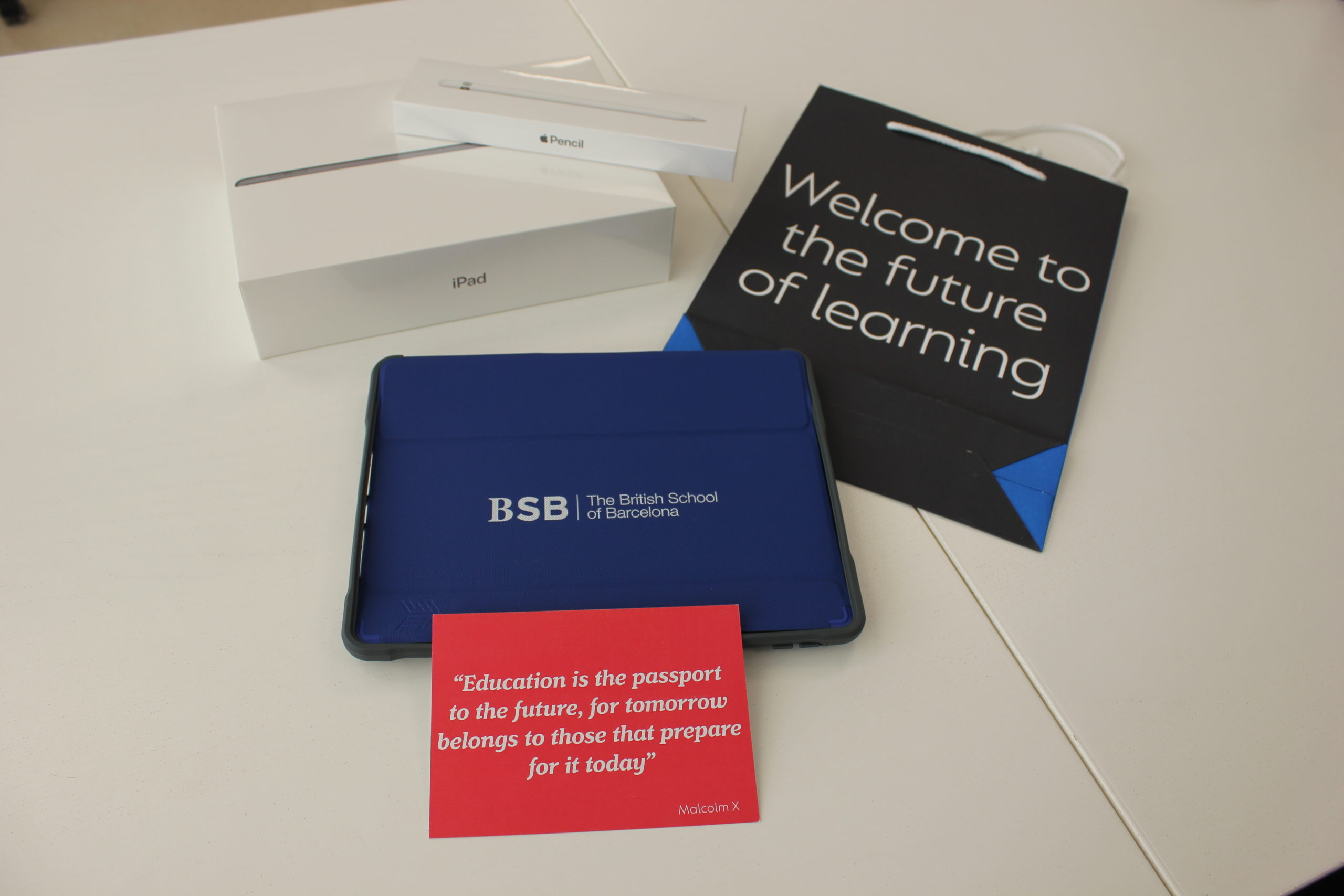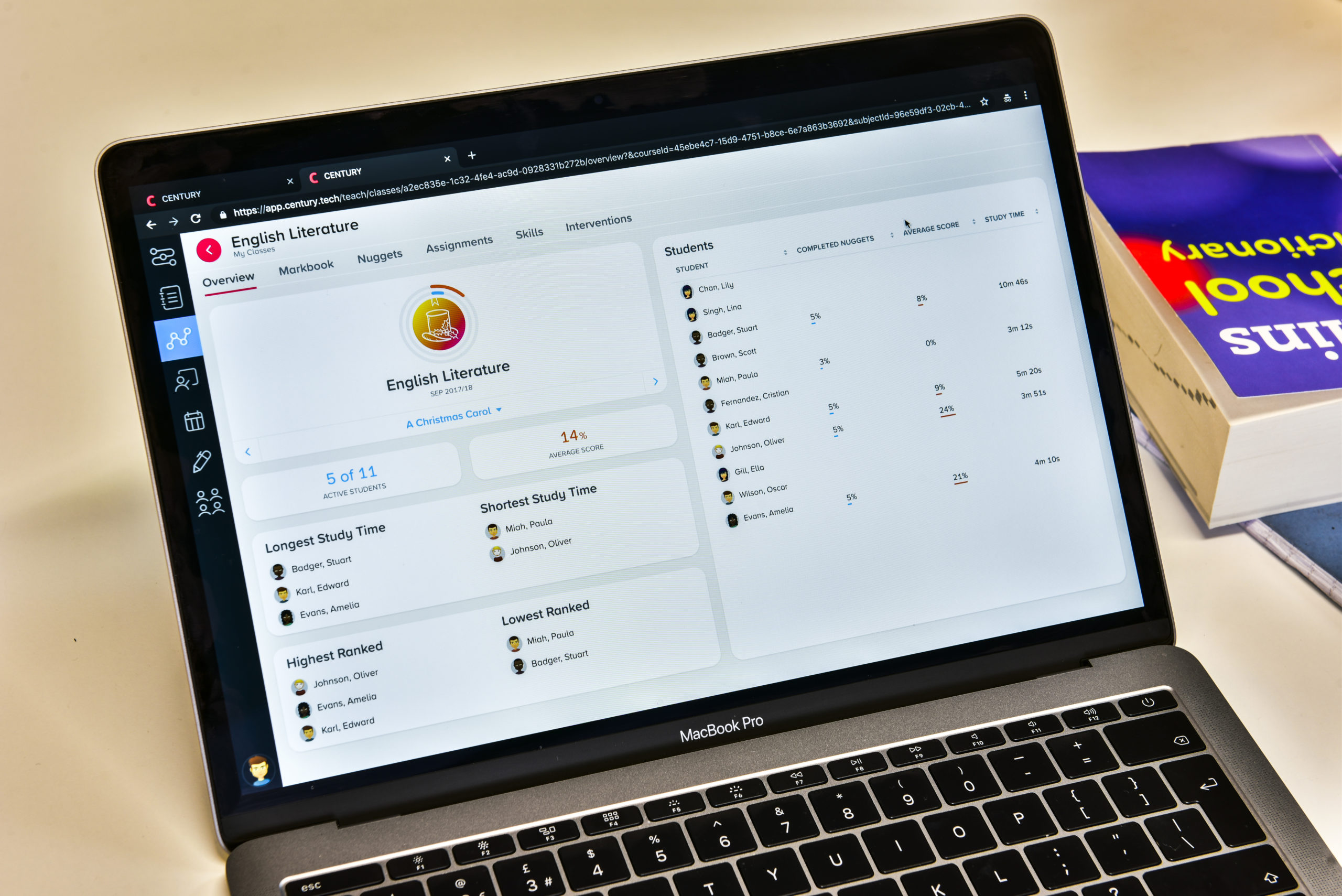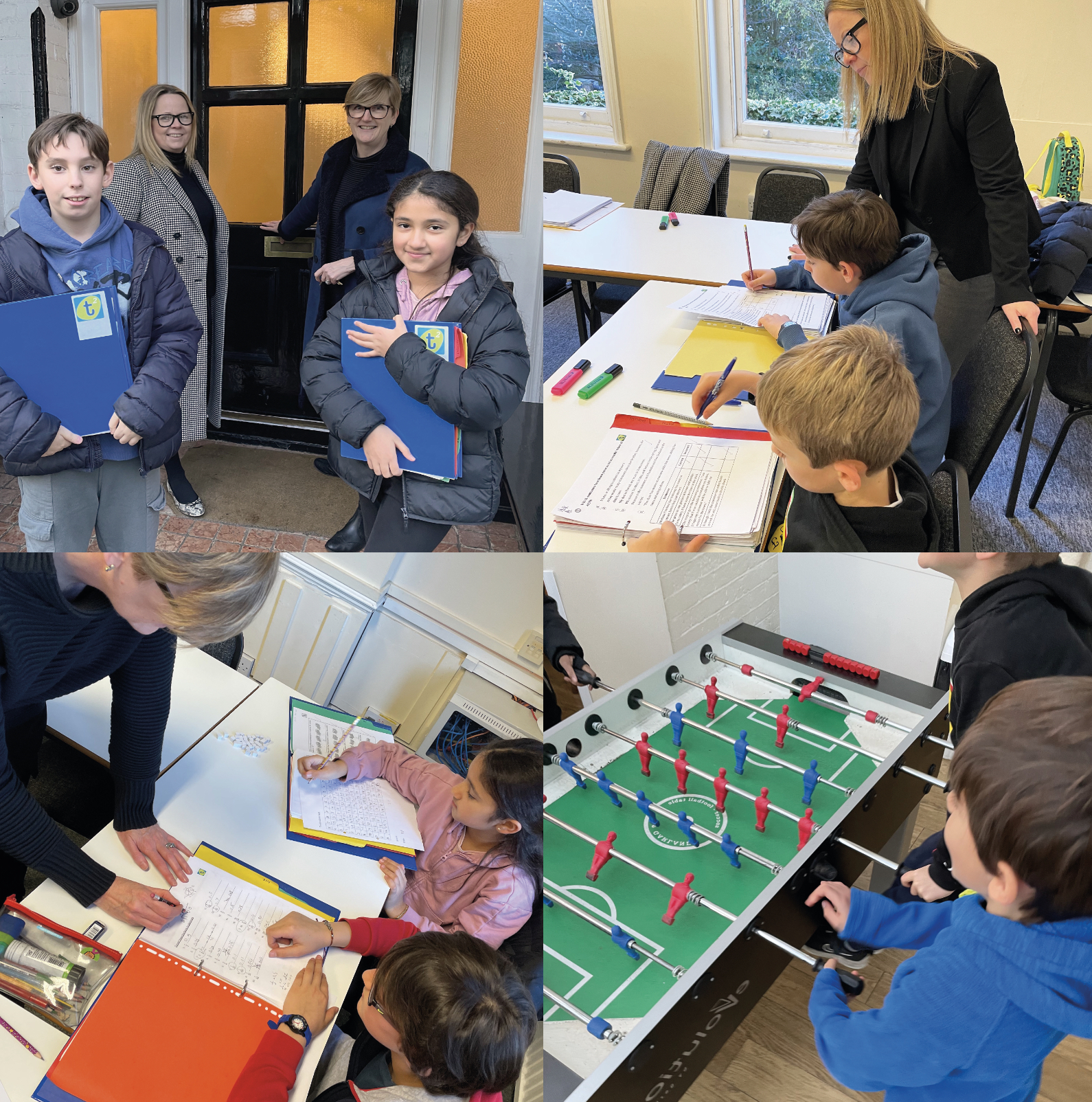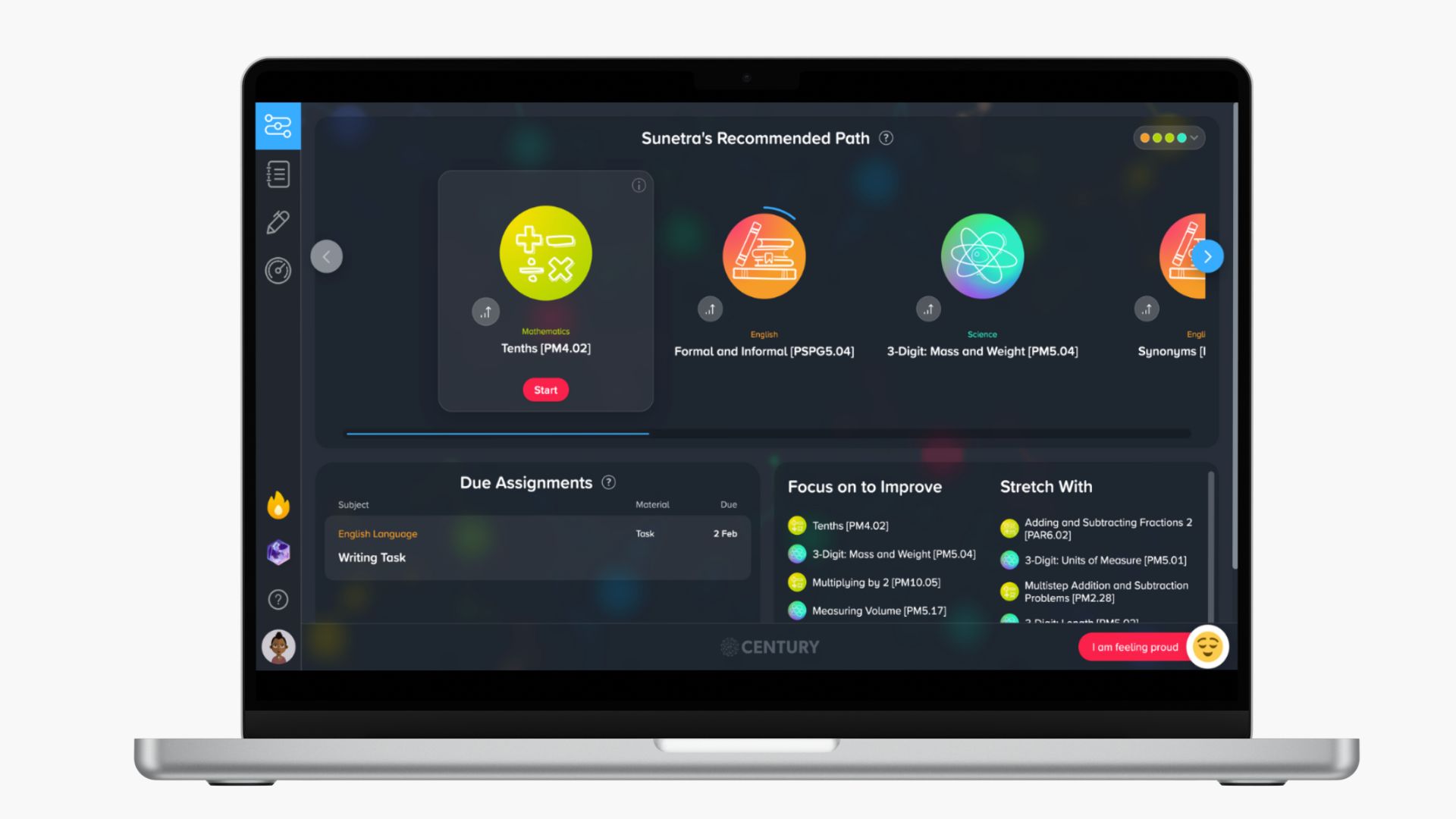Estimated reading time: 19 minutes
Cognita Schools is a group of 81 schools in 11 countries in Europe, Asia, the Middle East and Latin America. Since the first lockdowns last year, 16 Cognita schools have benefited from using CENTURY’s AI-powered learning tools to keep learning flowing throughout the disruption.
Following this successful introduction, Cognita is now rolling out CENTURY in 42 of its schools across the world.
We spoke to Sabrina Espasandin, Digital Learning Adviser at Cognita, to learn more about the impact CENTURY is already having on its schools, as well as how the group plans to roll-out the technology more widely.
Can you tell us about Cognita and your overall approach to learning?
Cognita is a group of 81 schools around the world. Our schools are in 11 different countries in Latin America, Europe, the Middle East and Asia. Our general approach to learning is a strong focus on academic excellence with a global perspective, and also developing a strong influence on character. So we want our students to be able to interact with different cultures to have a global mindset and also to develop soft skills that will be necessary when they leave school.
Presumably with that sort of approach, technology plays some sort of a role within your ecosystem?
Our main focus is on teaching and learning, so one of the things I was most excited about when I joined the group is that they understand technology as a tool and as a means, not as an end, in itself.
It’s there to support, to augment, to amplify teaching and learning. So the focus is put on pedagogy, on planning, on quality and quality resources. And technology is used whenever it fits the purpose of the lesson. So whether that be for feedback, whether that be for connecting with students or creating special resources, it's only used when necessary.
It sounds like it's something that is used both in the classroom and outside of the classroom?
Most definitely – and that's one of the best elements of technology. That it lets you continue the learning outside the classroom, or it lets you connect your classroom to other classes in the world with a real audience.
In the case of a lockdown, or in the case of the things we are experiencing right now, this is definitely a vital element and a vital aspect to have. And that's why we were so adamant about incorporating such a one-to-one programme for our schools, for the learning to continue no matter what: for learning to never stop.
Launching technology in 42 schools across multiple countries – some might look at that and think that's a huge challenge. As the digital learning coordinator, how have you addressed, and navigated that type of rollout?
It is no small feat. It is a huge undertaking. Anyone who's done it knows that it takes months to plan, to get the logistics ready and to actually roll it out. There are so many stakeholders being involved in the process. You need a strong IT team that will make sure that the network is secure, that the network is stable and has prepared for the influx of all these devices, you need a very strong educational department that will truly figure out how this fits into the school improvement plans or into the school's strategies. You need an edtech team that will make sure that teachers have good support and that they have training, because we don't want to invest in so much technology and we don't want to disrupt all these schools with all this technology, and then for that to be under-utilised. So we need to support teachers.
But we need to support students as well. We sometimes think that they are digital natives and they know how to use personal devices. But they might not necessarily know how to use them for creating, working or collaborating, so these are things that you need to teach. And these are things that you need to plan for.
You need a very good communications department, because there are outside stakeholders; you need to communicate this to the families. So it's quite an undertaking and we had to do it over a very short period of time, because as I said before, we didn't want the learning to stop at any point. When we were planning for it, it didn't look like we were going to go back into lockdown. That looked like a very distant memory. Well, unfortunately, we are back in it. I'm really grateful that we introduced these devices when we did, because now our students can transition into online learning seamlessly. I would say that the main reason why the deployment of these devices and expanding our edtech programme has worked so well in our case was because we took into account all the different elements that such an undertaking implied. You had great teams doing the technical bit, great teams doing the educational bit, and great teams doing the communication bit.
What I was so impressed about with your rollout was that in some instances, you were delivering not just individual bits of software or training teachers on individual bits of communication tools, it was the whole package in one fell swoop. What has that meant in terms of your training or leaning on companies to support and provide training? Presumably it's an ongoing process, it's not just "launch, off you go", and there are follow ups?
Yes, that was very important to us from the get go. This was not a hardware programme, this was not just handing out devices. We provided what we call a digital backpack. So with a platform like CENTURY, which features a lot of training on the side, we made a conscious decision to provide training that was on-demand. Nothing was live, it was something that teachers could go back to whenever they wanted, if they wanted, and they could go back to the training more than once. We also made sure that training continued.
One of the things that is very important is that when you get these devices into your lesson, you have to understand how to incorporate them properly so that they actually fulfil their purpose and classrooms are not just using technology for the sake of technology. Therefore it was crucial that we incorporated technologies or platforms that would fit into our personalised learning strategy and promote ownership of learning. Wee wanted to provide teachers and students with the tools for them to be able to incorporate these in the most efficient of ways.
Thinking now about CENTURY and what that technology platform can do for you – what are you hoping to achieve with the use of CENTURY? Where do you see the use of CENTURY really excelling in your school settings?
One of the key elements of our digital strategy is ownership for learning. CENTURY hits the nail on the head in that sense. Students are able to access a personal dashboard and see how far they've come, what their strengths are, what some of the topics are that have a little bit of room for improvement. They can stretch themselves, if they need to, they can revisit the material at their own pace, they can see the learning material when they get back home. They can revisit that, because maybe they need that extra element.
So I think that CENTURY has been really helpful for developing those skills that for us are just vital and crucial – the possibility of developing independence in our learners, to own their learning, so that they know where they are and where they want to go. And also to reflect on how far they have come and where exactly they want to get to.
Independent learning is now more important than ever, with students being required to focus on their own learning pathways and take more ownership over their learning. I'm aware of different roll-out approaches that some of your schools had, and I’m particularly thinking about Hastings School and their very unique approach. I wonder if you could talk about the range of implementation approaches you’ve seen?
One of the benefits of my position is that I have an overview of how each of the schools interact with the platform. We've got a huge array of implementation methods adopted by different schools, in the UK, in Spain, and in Switzerland.
We've got schools that are dedicating a period or a lesson to CENTURY during the week. That lesson is dedicated to CENTURY, so the teacher may send off a nugget or an activity which then gives them the freedom to walk around and focus on a certain student that might need a little bit of additional support, or the teacher may choose to see the results live – again, to understand who exactly needs that extra conversation and who will benefit from an extra stretch of the exercise.
We also have schools that are using a completely flipped approach. They send the content in advance and then they deal with the content in class, which liberates the teacher from the explanation and they can focus exactly on the learning, or collaborating, or the essence of the activity they're doing. Other schools have taken a different approach again, and they may opt to use CENTURY purely for homework. There's a little bit of everything. One of the things I really like about the platform is that it's so versatile. Regardless of how you use it as a school, you as a teacher have that freedom of choosing what's best for your students, and for your students at that time. Maybe at the beginning of the year you wish to have a more controlled approach, so you use it in the class. Then maybe towards the middle of the year you decide to let them just explore on their own. So it can adapt to your style as a teacher; it can adapt to the needs of your students.
In the case of Hastings School, they had a very unique approach. Some of our schools started using CENTURY during the first lockdown. Hastings decided to open up the platform to students over the Easter break – they just gave them the login details, and told them to explore. When the teachers went back to school they had a lot of data to work with, and that is when they did the training. It was a very special way of launching it and, in hindsight, it was quite smart for the school to do it that way. It worked for them. It might not work for every single school, but it really worked for Hastings in the sense that when they did the training, the teachers had something to work with so they weren't starting from scratch. What was also surprising was how adventurous students were and it's evidence of how easy the platform is to use, because with little training they were able to complete nuggets and to explore different topics that were maybe not part of the year group.
I love that story from Hastings School – that they implemented CENTURY very quickly during the first lockdown – because it is just reinforcement that technology should be intuitive, and it should be usable.
Creativity comes from constraints. When we find ourselves in situations like that, we have to think outside the box. You would normally never do a roll-out like this. But this actually worked. So well, you end up discovering that there's another way of rolling out.
From talking to senior leaders, teachers and students, have you noticed any impact on how CENTURY has helped your schools so far?
As far as impact is concerned, I have a very privileged position because I get to see the overall picture of how it's being used. When you see things like three million questions have been answered, or 300,000 nuggets have been completed, it's just mind blowing.
In order to get to those figures, because of the number of schools that are using the platform right now, it's not just the teacher assigned content. We're talking about children who are also doing things that are outside what their teacher has asked them to do, which I think is just amazing. It's fantastic, because it provides students with this platform where they can explore any content and the AI element adapts to exactly what they need, so every single student will have a very different pathway. An important thing is that it has definitely reduced teacher workload. Access to high-quality resources is very important, because as I said before, our focus is definitely academic excellence. Further, for a teacher, the knowledge that “I'm assigning something that is really high quality, and then my students will be able to complete that and they get instant feedback on how they're doing” is so valuable. This approach translates to “I take that information and that information informs my planning and then I adapt the planning of my follow-up lesson according to what they've done”. That is priceless to a teacher, because in a normal setting, you will never be able to do that.
If you had written exercises, you would have to do all the grading yourself, again taking a lot of time out of the lesson, and then you will have to go through analysis of all the information that the tests provide, or that the exercises provide, in order to be able to change your planning. CENTURY is just so quick, so intuitive and easy to read that I think it's taking planning and feedback and data analysis to a whole new level.
What message would you give those teachers who haven’t yet used CENTURY?
We have the benefit of being a global group and we have a community of CENTURY Tech ambassadors – people who have gone through the process of implementing it, people who have gone through the process of training their teachers, and training their students if necessary. I would say to them to reach out to people who've already done it. They can tell you what worked for them best, what didn't work for them, what they would have changed, the lessons they learned.
We have a very strong community of digital leaders and teachers in general. They provided the moral and educational support that we needed over lockdown. We definitely keep on using that community power. So I would say connect to other teachers and I will also say be brave and explore.
It's a fairly intuitive platform. The second you log in, you actually have a nugget that walks you through CENTURY, like a CENTURY within CENTURY, like a meta-CENTURY, which walks you through the whole process. Then there's also a lot of webinars that CENTURY provides; I've attended a few and I found them really useful. What I like about the webinars is that there's no set topic. Depending on who comes, and the questions that they ask, the training is based around that. It's like getting one-on-one training in a way and you learn from other people's experiences, too.
There's lots of debates around how AI fits into modern society, and even more debate around how it fits in the education space. What do you think – does it have a place in education? Is it here to stay? Can it be useful? What are your views on AI now that you've used a tool that has that and where does it fit into education in your view?
From my experience with AI, it has proved to be super-efficient in the sense that it allows teachers to focus on exactly what they need to focus on, which is teaching, as well as enabling an agility to adapt to your students. There's an element of instinct that every teacher has, adapting mid-lesson to whatever it is that pops up at that point, be that connected to your subject or not. What AI definitely brings into the picture is this possibility of creating different learning opportunities for students, depending on what they are experiencing at that time. So if at that time, they don't really understand a certain concept of math, then the system adapts to that specific gap and provides content for that student. That is impossible to do in a class of 25, in a class of 10, or in a class of five.
The instant feedback that you get from it, both as a student, and also as a teacher, because we were talking before about data analysis – data is fantastic in education - is superb. But if you're not able to process that data, if you're not able to truly understand what that means, then it won't inform your planning and it won't inform your teaching, so it will have no impact whatsoever. In that sense, what AI definitely does is to remove all that admin work from the teacher, and provide them with more time to focus on a specific student, having empathy for what it is that they are in need of at that moment, and providing that human element of teaching - alongside the subject specific knowledge.
How do you think the pandemic has affected your approach to learning and specifically thinking about the use of technology? Have there been any big shifts? And what will it look like in the future?
The pandemic definitely fast forwarded something that was already in motion. We already had a lot of digital learning initiatives, with incorporating technology in the classroom. The pandemic just took that 10x further – it blew us away and took us into a 22nd century.
Teaching and learning wise I think that the the ability to create spaces - like for example, in Microsoft Teams, or in Google Classroom - students can access the content, interact with each other, collaborate more, communicate with the teacher, the teacher can offer feedback, both written and oral feedback, all of which makes the experience more human and approachable.
Having the possibility of accessing such a wealth of data, and understanding where the students are and where they need to go, wouldn't otherwise have happened to this extent. It has definitely changed the way we also plan the lessons, it has definitely changed the way we do assessment. It has had a huge impact and I think it's a point of no return: you cannot go back to the old ways after this.
I think particularly with assessment, we're going to see a huge shift, that goes right up to the way that universities and employers look at individuals. Let's fast forward five years time, 10 years time – what is the future of educational technology? What is the classroom going to look like in 2025?
That is a whole conversation in itself! We can definitely say that if someone had asked us what will happen in 2020, we would never have said that we will be here doing the things that we're doing. But if I had to just dream about what could potentially happen in the future, I would say, I like what's happening right now in that the learning takes place anywhere, that there's this hybrid component to the lesson.
We had elements of taking learning outside the classroom by connecting to other classes, by connecting to two speakers or specialists, collaborating with other schools with inter-school projects, but the possibility of extending that learning regardless of where you are physically, also timewise – you don't have to collaborate synchronically, you can collaborate asynchronously. So that ability of working from anywhere and interacting with peers from around the world, getting feedback instantly, those are things that I think we will keep on seeing hopefully in the future.
Not robots in the classroom just yet..? Sabrina, thank you very much for taking the time to talk to us today. It's been hugely insightful, and I'm sure people will really benefit from your broad experience across the Cognita group. We look forward to continuing our work with you.
Thank you for having me!
Learn more about how CENTURY can supercharge your students’ learning.
